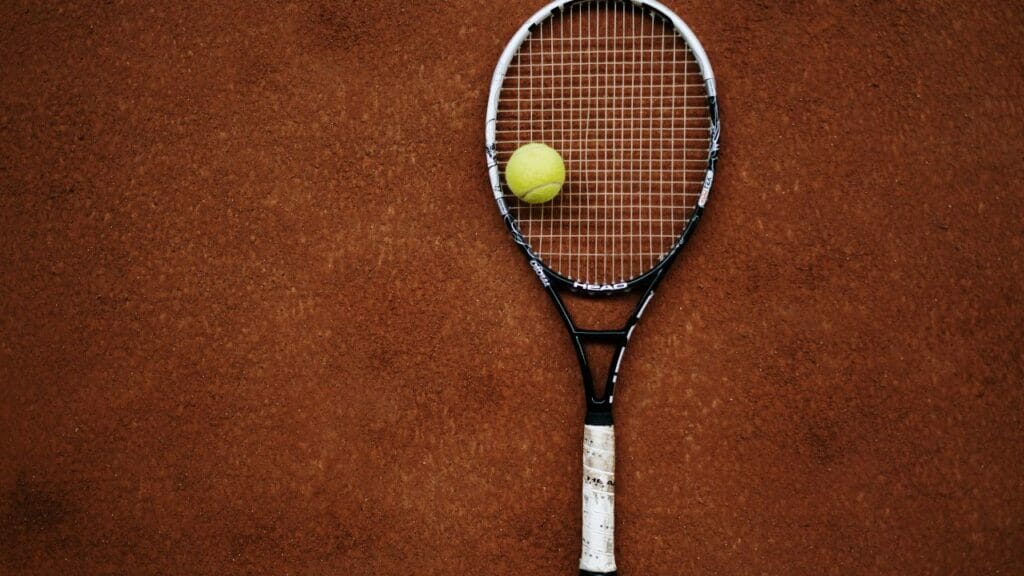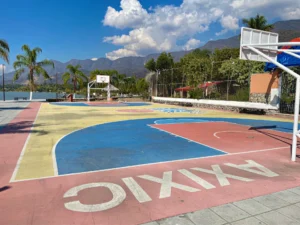When it comes to playing tennis, having the right equipment can really affect your performance. One crucial piece of equipment that often gets overlooked is the size of your tennis racket.
Many players need to pay more attention to the importance of choosing the right size racket, but it can have a significant impact on your game.
Choosing the right tennis racket size is essential for improving your performance on the court. A too-big or too-small racket can affect your control, power, and overall enjoyment of the game.
But with so many options available, how do you determine what size tennis racket you need? In this blog, we will guide you through the process of selecting the perfect racket size based on your age, height, and playing style.
Whether you are a beginner or an experienced player, this information will help you make an informed decision and take your game to the next level.
This blog post will explore why selecting the correct racket size is essential and how it can enhance your overall playing experience.
Let’s get started to discuss all the factors about What size tennis racket do I need?
How to Determine the Right Racket Size for You?
When determining the right racket size for you, there are a few key components to consider the tennis racket head size and the racket length. Let’s start with the tennis racket head size.

This refers to the surface area of the stringbed and can greatly impact your performance on the court. There are three main racket head sizes, each with its own specifications that will affect your playing style.
Read More
What Size Tennis Racket Do I Need
Let’s explore what size tennis racket do I need.
The first head size is the midsize racket head, which ranges from 85 to 97 square inches (548 – 626 square cm). This is the smallest head size out of the three options.

While it may offer less power generated from each shot, it provides more control over the ball. This makes it a popular choice among advanced players who prefer precision and accuracy in their game.
On the other end of the spectrum, we have the oversized tennis racket head, which measures 105 square inches or more, equivalent to 677 square centimeters or above. This is the largest size available and offers more power to generate shots with greater force.
However, control may be slightly compromised due to the larger surface area. If you are looking to maximize power and hit the ball with more force, an oversized racket head might be the way to go. The mid-plus size is the way to go if you’re looking for a balance between power and control.
This range typically spans from 98 to 104 square inches or 632 to 671 square centimeters. The mid-plus size is often referred to as the “in-between” option, as it strikes a balance between power and control.
With a mid-plus racket head, you can expect a decent amount of power while maintaining good control over your shots. It offers a good blend of power and control, making it suitable for players who want versatility.
Tennis Racket Sizes By Age
In this section, we will discuss tennis racket sizes by age.
Another important factor to consider is the racket’s length, which is measured from the bottom of the handle up to the beginning of the head. The size of a tennis racket can vary between 19 and 29 inches (48 – 74 cm), with each size being more appropriate for certain age or height groups.
For kids who are eight years old and younger and have heights between 3’75” to 4 feet (around 114 – 124 cm) and below, it is recommended to use a racket with a length of 19 to 23 inches (48 – 58 cm). These smaller rackets are designed to be easier for young children to handle and maneuver.
Children aged 8-10 years old, with heights ranging from 4 feet to 4′ 6″ (124 – 140 cm), typically use rackets with a length of 23 to 25 inches (58 – 63.5 cm). These rackets provide a good balance of control and power for young players who are starting to develop their skills on the court.

Teenagers, with heights ranging from 4′ 6″ (140 cm) and taller, commonly use 26-inch (66 cm) rackets. These rackets are slightly longer and provide more power for players with a stronger swing.
For adults of any height, the typical tennis racket size length ranges from 27 to 29 inches (68 – 73 cm). 29 inches is the maximum allowed length for a tennis racket. These rackets are designed to provide adult players with maximum power and control.
Choosing the right size tennis racket is essential for optimizing your performance on the court. It’s important to consider your age, height, and skill level when selecting a racket size. Using a racket that is too long or too short can affect your swing, control, and overall game.
Ultimately, the right racket size depends on your playing style, skill level, and personal preferences. It’s important to try out different sizes and consult a knowledgeable tennis professional to find the perfect fit to enhance your performance on the court.
Choose the Right Grip Size
The tennis racket grip is an essential component for players to have control and comfort during their game. There are various types and sizes of grips available to suit different players’ preferences. Typically, there are five different sizes of grips, ranging from 4 inches to 4 5/8 inches in circumference.
The grip size affects how tight a player can hold the racket, ultimately impacting their ability to generate power and maneuverability. It is crucial to choose the right grip size, as using an inappropriate size can cause discomfort and possibly lead to injuries such as tennis elbow. Players should consider their hand size, strength, and playing style when selecting a grip size.
Additionally, some players may prefer to build up the grip size by adding an overgrip or grip tape to achieve a more personal and comfortable feel. Overall, the tennis racket grip is a vital aspect of the game and should be chosen carefully to optimize performance and prevent any potential injury.
Understanding the Importance of Choosing the Right Size Tennis Racket.
Choosing the right racket head size and length is crucial for any tennis player. It can significantly impact your game and overall performance on the court.

Many players often need to pay more attention to this aspect and end up using a racket that’s not suitable for their playing style or body type.
You can avoid this mistake by following our comprehensive guide on how to determine the right racket size.
Improves Control and Accuracy
One of the primary reasons why selecting the right size tennis racket is crucial is that it can improve your control and accuracy on the court. A racket that is too large or too small for your hand can make it challenging to move and control the ball effectively.
When you have a racket that is the perfect size for you, it allows for better grip and control, resulting in more accurate shots and increased accuracy.
Whether you are serving, volleying, or hitting strokes, having a racket that fits your hand comfortably can dramatically enhance your ability to control the ball and hit your desired target.
Reduces Risk of Injury
Using a tennis racket that is the wrong size can increase your risk of injury. If the racket is too big, it can put unnecessary strain on your arm, wrist, and shoulder, leading to potential injuries like tennis elbow or shoulder impingement.

On the other hand, if the racket is too small, it may not provide enough stability, causing your hand to twist or bend unnaturally during each stroke. By choosing the right size racket, you can minimize the risk of developing repetitive strain injuries and enjoy playing tennis without the worry of potential harm.
Enhances Power and Performance
Another significant advantage of selecting the correct size tennis racket is that it can enhance your power and overall performance on the court. A too-heavy or light racket can impact your swing speed and power generation.

When your racket is the right size, it allows for the optimal transfer of energy from your body to the ball, resulting in more powerful shots. With a properly sized racket, you can maximize your swing speed and generate the necessary force to hit the ball with precision and power, giving you an edge over your opponents.
In short, choosing the right racket size is essential for every tennis player. By considering your playing style, skill level, and physical attributes, testing different sizes, and seeking professional advice, you can determine the perfect racket size for you.
Racket Head Size
Choosing the right head size for your tennis racket is crucial for your performance on the court. The head size determines the area where the ball will make contact with the racket and ultimately affects how you strike it. When selecting a racket head size, there are three main factors to consider in terms of performance.

Surface Area
Firstly, the surface area plays a significant role in your ability to strike the ball accurately. A larger head size provides a larger surface area, making it easier to hit the ball without missing.
This is particularly beneficial for beginners needing help calculating the ball’s direction and positioning their hand and racket accordingly.
With a larger head size, even if you make a small miscalculation, you still have a higher chance of successfully striking the ball. On the other hand, smaller head sizes require more precision as they offer less room for error.
In addition, a larger surface area also offers a more pronounced “sweet spot” on the stringbed of the racket. The sweet spot is the area in the middle of the stringbed that provides the most power and control during strokes.
When the ball makes contact with the sweet spot, it reduces shockwaves and vibrations, resulting in a more comfortable and stable feel for players. This is especially beneficial for players who want to minimize the impact on their arm and maximize their shot accuracy.
Spin
When generating spin in tennis, larger head sizes can be a game-changer. Not only do they help enhance spin, but they also act as a spin generator. The key to creating spin lies in striking the ball with speed and a steep angle.
With larger surface areas on the racket head, players have a higher chance of achieving this type of stroke without missing their target. Moreover, the increased surface area allows the strings to be further apart, promoting spin.
This means that with a larger head size, you have a better chance of landing a powerful strike, and with the “open” strings in your favor, you can be sure to generate the spin you need to outplay your competition on the court.
Tennis racket string patterns play a crucial role in maximizing spin on the ball. While several string patterns are available, the most commonly used one is the 16×19 pattern, which is found in rackets of all head sizes. However, open patterns, such as the 16×9 or 16×8 patterns, are known to generate even more spin.
This is because the strings in these patterns are placed farther apart, allowing the ball to sink deeper into the stringbed, thereby increasing the spin effect.
On the other hand, closed patterns like the 18×20 pattern, where the strings are closer together, may not generate as much spin. However, these closed patterns offer advantages in terms of control.
With a larger surface area making contact with the ball, players can experience enhanced control when striking the ball. So, while string patterns can significantly impact spin generation, finding the right balance between spin and control is essential based on your playing style and preferences.
Power of a Larger Racket Head Size
One of the main advantages of a larger racket head size is its increased power. When compared to smaller head sizes, larger ones allow players to generate more power during a hit.
This is particularly beneficial for players who rely on powerful shots. Furthermore, larger head sizes are less prone to errors, providing a more comfortable experience. The reason behind the enhanced power lies in the bigger surface area of oversized racket heads.
With a larger head size, the ball sinks deeper into the stringbed upon impact. As a result, the ball also bounces further, giving your shots greater power. Even when hitting the ball with minimal force, you will notice a more powerful stroke than what you are normally used to with smaller head sizes.
However, it’s important to note that larger head sizes often come at the sacrifice of control. While they offer more power, they may require you to sacrifice some level of control over your shots. On the other hand, rackets with smaller head sizes provide better control despite not offering the same power advantage.
How to Choose the Right Head Size?
Choosing the right head size for your tennis racket is an important decision that can greatly impact your gameplay. Whether you are a beginner, an intermediate player, or an advanced player, the size of the racket’s head can make a difference in your performance on the court.
For beginners, oversized head sizes are highly recommended. These larger heads provide more flexibility and allow for more margin of error. As a beginner, it is common to make mistakes and struggle with striking the ball efficiently with the necessary power.
The oversized head size will help you generate the required power, making hitting the ball easier and improving your game. Although, if you feel that you are coordinated enough and want to focus on learning and practicing long swings, you may want to consider smaller head sizes.
On the other hand, intermediate and advanced players may benefit from a smaller head size. Control will likely take priority over power as you progress in your tennis journey. A smaller head size offers a more precise and responsive feel, allowing for greater control over the ball.
This can be particularly beneficial for players who have developed their technique and are looking to enhance their style of play. Focusing more on your own technique and generating power and spin through your skills, you can take your game to the next level.
If you want the most comfortable surface for your tennis game, COPO Sports Courts offer a wide range of innovative and high-quality flooring solutions for indoor and outdoor tennis courts.
Summary
Determining the right size tennis racket is crucial for optimal performance on the court. Considering factors such as player height, skill level, and playing style, one can make an informed decision when selecting a racket size.
It is important to remember that a racket that is too heavy or too light can affect control and power, while a racket that is too small or too big can impact control and comfort. Therefore, finding the appropriate racket size will create a more enjoyable and effective tennis experience.
FAQs
How do you know what size tennis racket to get?
To determine the right tennis racket size for you, consider your hand size, playing style, and personal comfort. Measure the distance from the middle crease of your palm to the tip of your ring finger. This measurement will help you identify the appropriate grip size. Additionally, try different racket sizes and grip sizes to find what feels comfortable and allows you to control the racket effectively.
What does size 4 mean for a tennis racket?
A size 4 in tennis racket terminology typically refers to the grip size of the racket. It corresponds to a grip circumference of 4 1/2 inches (approximately 11.4 cm). This is one of the standard grip sizes available for tennis rackets.
What Grip size is Federer’s racket?
Roger Federer has used rackets with varying grip sizes throughout his career, but his most commonly used grip size is around 4 3/8 inches (approximately 11.1 cm).
What size is a men’s tennis racquet?
Men’s tennis rackets come in various sizes, primarily determined by the grip size. Common grip sizes for men’s rackets are 4 1/4 inches, 4 3/8 inches, and 4 1/2 inches. The choice of grip size depends on the individual’s hand size and comfort preferences.
How do I know my tennis grip size?
To find your tennis grip size, measure the distance from the middle crease of your palm to the tip of your ring finger. Use this measurement to match it with the appropriate grip size on a sizing chart or by trying out different rackets in a store. Your comfort and ability to hold the racket comfortably are key indicators of the correct grip size.
What is the most common size tennis racket?
The most common grip sizes for tennis rackets are 4 1/4 inches (L2) and 4 3/8 inches (L3). These sizes are often referred to as “medium” grip sizes and are suitable for a wide range of players.
How do I know if my tennis racket is too big?
If your tennis racket feels too big, you might notice difficulty controlling the racket’s head, a lack of maneuverability, or discomfort while playing. Your fingertips may not be able to touch your palm comfortably when gripping the racket. If you feel like you have to over-extend your hand to reach the handle or if your grip feels unstable, the racket might be too large for you.









